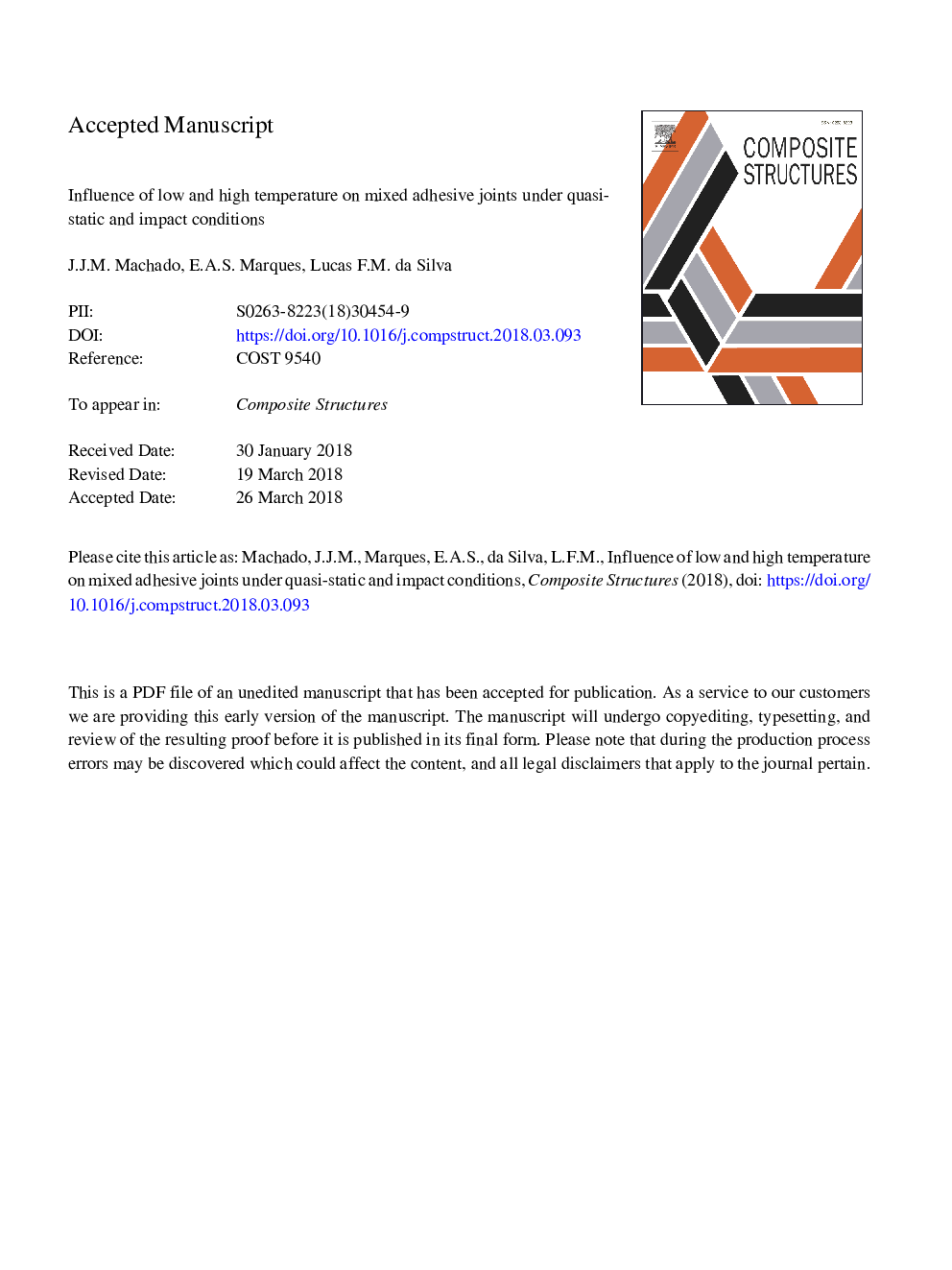| Article ID | Journal | Published Year | Pages | File Type |
|---|---|---|---|---|
| 6703448 | Composite Structures | 2018 | 34 Pages |
Abstract
The increasing use of composite structures in the automotive industry is due to strict regulations regarding fuel efficiency and safety standards. The main advantage of the use of adhesives is the possibility of joining dissimilar materials, particularly composites. The technique studied was the mixed adhesive joints, as two or more adhesives can be used in a single lap joint combining the properties of those adhesives to attain mechanical performance superior to that obtained using those adhesives individually. The main goal was to assess if a previously validated combination of mixed adhesives in a composite joint, tested under quasi-static and impact conditions, offers the same advantage over the use of a single adhesive when subjected to low (â30â¯Â°C) and high (80â¯Â°C) temperatures. The influence of temperature on the behaviour of the composite joints was assessed in quasi-static and impact conditions allowing to infer the effect on each adhesive. Another important aspect of the use of this type of technique is to avoid the early delamination of the composite substrates. This method was found to improve the performance under quasi-static and impact conditions although its behaviour under the wide range of temperature tested was found to vary significantly.
Related Topics
Physical Sciences and Engineering
Engineering
Civil and Structural Engineering
Authors
J.J.M. Machado, E.A.S. Marques, Lucas F.M. da Silva,
